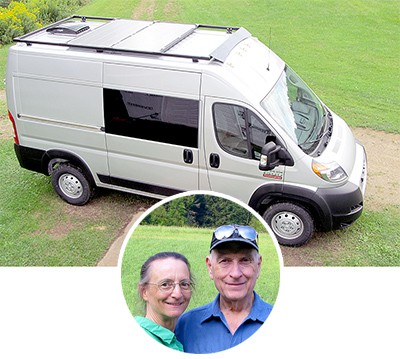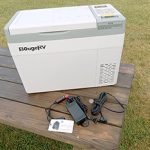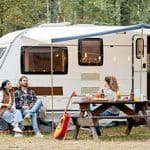
Camper vans bring the thrill of camping to any trip you take. A tiny home on wheels, combined with a motor vehicle that easily transports it around, gives you freedom as you have never known. Fear not, once you get the basics down, you may forget that your vehicle is a little larger than most cars on the road.
Camper vans are larger and heavier than most vehicles that we are used to driving. They can take some getting used to, though most camper van owners would agree they are relatively easy to handle. The driver’s seat sits higher, giving you the advantage of seeing more of the road ahead.
So, you are getting ready for your first time driving a camper van. How exciting! Getting used to operating a camper van includes feeling comfortable with the vehicle itself, all the while being mindful that you are driving a tiny home.
If you’re going to be hitting the road for the first time, you might be a little worried, so read on further to get helpful tips to make your first trip hassle-free. From city streets to country roads, camper vans are the way to go.
What To Be Aware Of For First Time Drivers
For those who have only driven regular-sized cars, driving a camper van could have its advantages, such as sitting higher, which gives you a better view of the road than in a sedan. A bird’s eye view makes seeing other vehicles and upcoming turns much easier.
In the past, if you have driven a pickup truck or a large SUV, you should have no problems driving a camper van. They are close enough to the length and height that you won’t feel so out of place in the driver’s seat.
Things to be aware of:
- Your seat and steering wheel height. Take time to adjust the driver’s seat so that you can easily reach the pedals. If your steering wheel is fully adjustable, you should be able to slide it closer to you or farther away. The steering wheel should also be adjustable to make it lower or higher.
- Your camper van’s measurements. Get familiar with your camper van as far as the specs go. You will most definitely want to know your van’s height to judge when you can not enter a garage to park or other low clearance areas. Width and weight are also helpful facts to know.
- Adjusting mirrors to see your blindspots. Your mirrors are located to help you see what is behind you and coming up aside from you. Always familiarize yourself with the mirrors and adjust them as you need.
- Distractions. You are driving a larger and heavier vehicle than usual. It is crucial that you keep your attention on the road and not be bothered by distractions.
- Big rigs on the highway. When vehicles that are larger than you pass you, you will feel a blast of wind from the big rig truck or bus. Even a Class A RV will give your van a gentle shove as it passes. You can prevent losing control by paying attention to when a large vehicle is passing and bracing for it.
- Your gear on the exterior. Anything strapped down to the outside of your camper van should be fastened tightly and double-checked before driving off.
- Your interior storage. Lock all cabinets, and store loose items away in a safe place while driving. Anything that is not fastened down, or locked away, can potentially get knocked around on your trip.
Is a Special License Required?
Throughout the United States, you can use your standard driver’s license to drive a camper van. The laws primarily go by weight restrictions. If your vehicle is under 26,000 lb GVWR, you do not need to upgrade your license to a commercial one. Therefore, as long as you have a current license to operate a motor vehicle, you may drive your camper van to your heart’s content.
A camper van is considered a Class B RV. Classifications can be confusing, as it is the smallest size RV, with both Classes A and C being bigger. Some of the heaviest Class A motorhomes would require a CDL license to operate. Every state is different; here are Texas laws as an example.
How Does The Size Affect Handling?
Most camper vans out there handle very well. They offer passengers quite a smooth ride with responsive brakes and a decent suspension system. As stated earlier, the van’s seats sit higher than the average car’s, providing you with an excellent road view.
When it is empty, a Class B van’s weight is more than your standard car’s weight. And when we begin packing all of our belongings into it, we weigh it down even more. The heavier our van gets, the more fuel we burn, and the slower the vehicle will accelerate.
Height matters. How does the height of a camper van affect how it handles? Well, it is basically shaped like a giant brick, and the taller we go with hightop vans and conversions to raise the roof, the less aerodynamic it will be, which we will notice most when we are on the highway.
Your camper van’s length may make it more difficult to drive and park, but it shouldn’t be a big problem. All you need is to practice some to get used to it, and it shouldn’t present any significant issues for drivers. Just be aware of the rear end when making turns, and don’t cut it too short.
Long wheelbase vans give you extra room inside for living or storage space, but they can make driving a little more complicated than a shorter wheelbase van. One thing that you will want to take into account, the longer your van is, the more difficult it will be to parallel park. Anyone not accustomed to longer wheelbases may find this an overwhelming obstacle, so stick to a length you’re comfortable driving.
Know Your Measurements
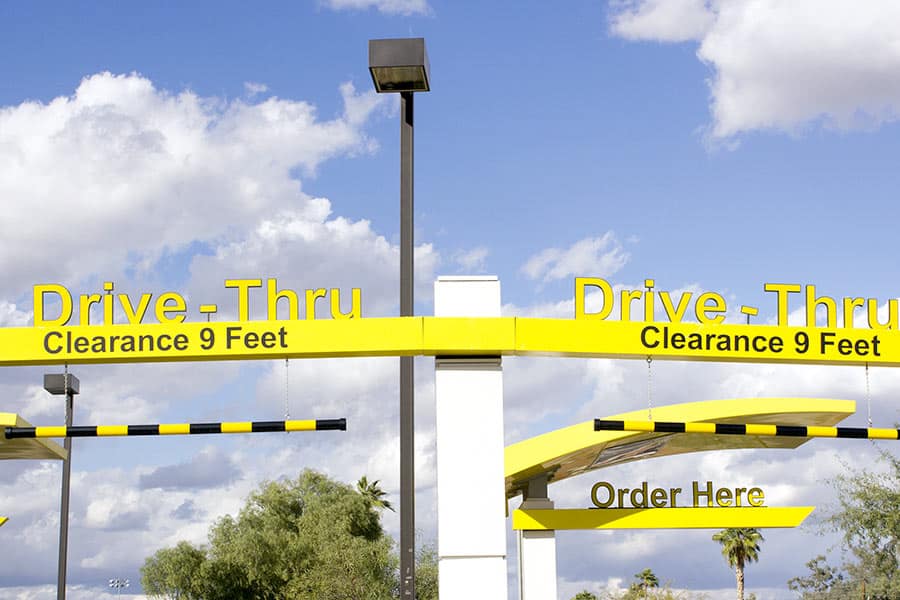
Knowing the measurements of your van can not be stressed enough; it is strictly a safety precaution. A camper van is longer and taller than an average car. So, you might not be able to go as easily to places as you once did. The chances are that you may not run into this issue for a while, but when you do, you will be glad that you planned for it.
Usually, signs will warn you when you are approaching a low overhead clearance. Here are several obstacles to watch out for:
- Drive-Thrus
- Tunnels
- Parking awning
- Parking garage
- Compact car parking
Your owner’s manual should have the exact measurements of your model of the camper van. One thing you must remember is if you add anything to the roof, such as solar panels, exhaust fans, or storage, you will be adding to the height. So, it is best to remeasure after you are all loaded.
One straightforward method is to park the vehicle on level ground, using a ladder climb up to where you can place a long straight edge on top of the highest item on the roof.
Then use a level to get the straight edge level and measure down to the ground from the bottom of the straight edge. This measurement will be the actual height of the vehicle. Write the number down somewhere handy for quick reference.
Using Mirrors
Using all of your mirrors is essential when driving a camper van. Some vans will have windows on all sides that you can use to see around you, but most do not, this creates blind spots. Blindspots can be the one big hurdle that you will need to get over. To help you out, you can add blindspot mirrors on to your side-view mirrors.
Adding blindspot mirrors is a user-friendly quick job, and they really do enhance your rear and side view. These inexpensive blind spot mirrors are universal fit, rust-resistant, and easy to install with the double-sided tape on the back. They allow you to see traffic where you usually won’t see it, helping to ensure safety.
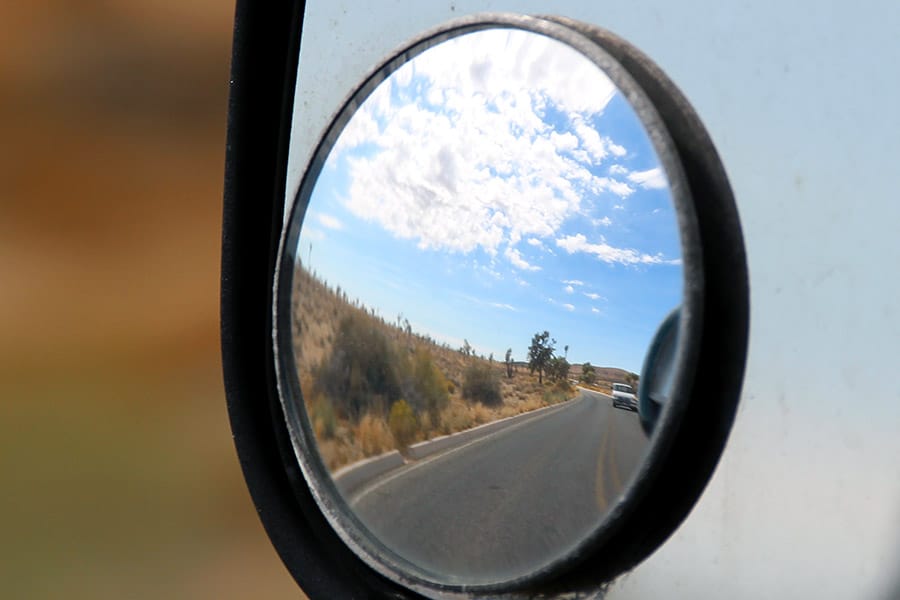
Keeping the Windows Clean
When driving a camper van or any vehicle for that matter, a significant safety factor is not keeping your windows clean. Dirty windows contribute to reduced visibility during both daytime and nighttime driving.
Dirt and grime build up on the outside of your windows, causing a hazard, limiting your vision. A film also builds up on the inside. This film leads to poor visibility when the sun is low and when vehicles approach at night.
When cleaning your windows, it works best to park the vehicle in a garage or the shade and let the windows cool down. While the windows cool down, collect a bucket, sponge, glass cleaner, microfiber towels, and any other cleaning supplies that you will need.
Cleaning vehicle windows is one of my least favorite chores, and I use different products for different areas. Finding one that suits you is sometimes challenging. Here are a few products to make cleaning your glass easier:
- Cleaning your windshield is sometimes a stretch. You can’t reach down into the faraway corners. Now you can do it easier with this five-piece set from E-Bro. It allows you to reach your whole windshield with the triangular-shaped pivoting head.
- Adam’s Polishes has a glass cleaner that is safe for use on tinted windows. It doesn’t contain ammonia, has a streak-free formula, and won’t strip car wax or paint protection. It comes in different sizes and combinations.
- If you want a glass cleaner with a rain repellent, Rain-X has a 2-in-1 glass cleaner with water beading technology. You just spray it on, then wipe it away, giving you streak-free cleaning.
- Rain-X also has an original version in a 7-ounce bottle that improves visibility in wet weather conditions. Plus, you can also use it to restore headlights and clear plastic.
- I always seem to run out of rags or cloths for the job. Now that problem is solved. Polyte has a 24-pack of microfiber cleaning cloths that provide a streak-free, lint-free surface for all vehicle cleaning needs. Cloths are machine washable and are soft, perfect for using wet or dry.
Windshield washer fluid on its own is not always adequate, but it is beneficial while driving. Make sure to keep your washer fluid tank topped off, so it is ready when you need it. Clean windows lead to safer driving.
Other Posts of Interest
- How to Keep Things Safe While Camping: The Essential Guide
- The Cost Of Converting A Sprinter Van Explained
- Is a Pop-Top Worth It?
- How Do You Winterize A Sprinter Camping Van?
Navigating Highways
Interstates and freeways often provide us the most direct route to our destination. Their design means that we can drive unhindered, at higher speeds than through a congested part of town with red lights, intersections, and pedestrians.
These roadways, especially if heavily congested, can be quite challenging to merge into the traffic flow. Since the average camper van does not have much acceleration power, you should get up to highway speed on the merging ramp to avoid potential problems.
Unless you know the route, it would be wise to use a GPS to navigate your way to wherever you are going. We can rely on the GPS to tell us which exit to take and which routes to follow. Having that voice that speaks to you is helpful and keeps the distractions to a minimum.
Garmin makes a handy GPS unit that conveniently has campgrounds preloaded, making it easy to find places to park your camper van for the night. The 8-inch display allows you to see what is coming up ahead of you easily. It will warn you about upcoming sharp curves, steep grades, and more. No longer will you have to wonder how to get there!
A Comfortable Speed
For the best fuel economy, it is recommended by The Office of Energy Efficiency and Renewable Energy to keep it at a steady speed. They say that driving under 50 mph is best for most vehicles. When you have the weight of a full load in your van, you can expect to get a lower mpg. According to their website, for every 100 pounds of cargo, you will lose 1% of your fuel efficiency.
Since camper vans are not designed with fuel efficiency as a top priority, every little bit helps. Check the pressure in the tires and keep them inflated to the proper PSI, and taking your van in for regular maintenance can also help you get the most out of every fill-up.
Backing It Up
The key to backing up a large vehicle is to be aware of your length and use your mirrors to your advantage. Our brain takes an extra minute to compute that we are going in reverse and that everything is now backward. Give yourself that extra minute; use it to take a double check at your surroundings.
While your mirrors are all great, a backup camera could give you an extra advantage. Boscam has a backup camera kit that uses a wireless signal, so you don’t have the hassle of running wiring from the front to the back of your van. It has a 5-inch TFT-LCD screen enabling you to view your blind spot behind you clearly and provides good vision even if the light is low.
Choose a reverse camera with a large clear display screen vs. a small one with poor resolution. The difference is in the clarity and shadows of the display. The clearer the picture, the safer you can be. You will be able to ascertain that nothing and no one is behind you and that the coast is clear to back up into or out of a parking space.
Taking a Break
Road trips are the most fun way to break in a new camper van. Traveling a long way from home often means that we are behind the wheel for at least several hours at a time. Driving for an extended period can take a toll on the mind and body. Taking a break from the road at least gives your eyes a chance to rest.
A pit stop can be however long you want it to be, usually depending on how you are feeling, and if there is a deadline of when you are to hit your destination. Even if you are tight on time, take 5 minutes to stretch your legs and grab a snack to perk you right back up. What’s the best part about making a pit stop in your van camper? You can take a comfortable nap if you want to.
Parking
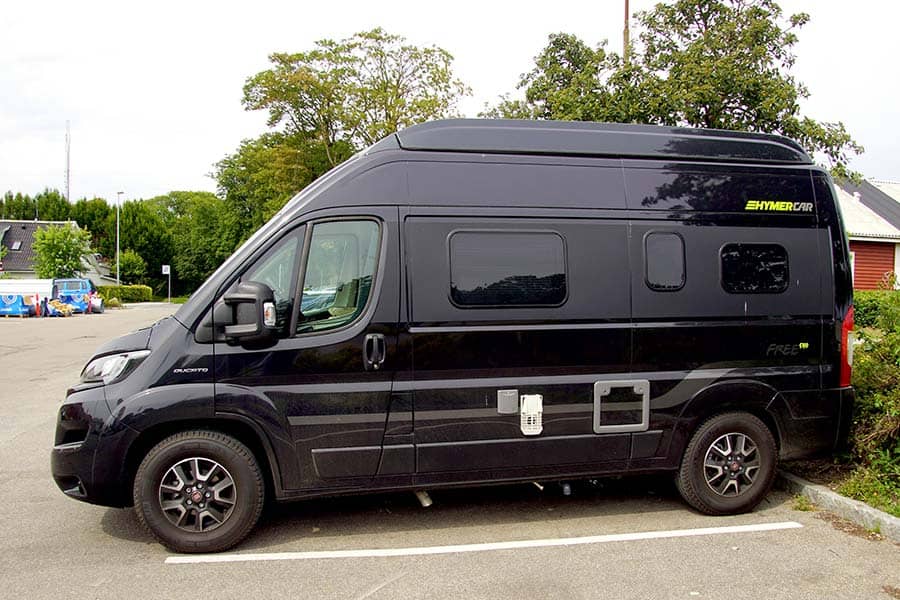
Honestly, parking your camper van is not as difficult as you think it is. Just be happy that you do not have to park a big Mack truck; parking a camper van is a breeze compared to that. The average parking spot is 9 feet wide and 18 feet long. The size should be just about the perfect width and length to fit in comfortably compared to your van’s size.
However, there are extra-long wheel based vans out there that are up to 24 feet in length. If you have one of these extended vans, parking can be a bit more of a challenge to find. The easiest way to find a spot that you know you will fit in is to park near the busses and big trucks.
Practice your parking in an empty lot to get the hang of it; remember, “practice makes perfect.” Once you can grasp your vehicle’s dimensions, it will be that much easier to park it. If you feel that the area you are entering could get tricky (for example, tight or busy parking lots), it may be best to find parking elsewhere, and just walk to your destination.
How To Find Parking
When searching for a parking spot, the critical thing to remember is to have patience. If you can, find a place that has an open space next to it. The extra space makes getting in and out a lot easier, especially if you will be loading or unloading through the side door. Those who prefer to use the back door, simply pull through a double spot far enough to use both.
Mind your height. The most significant restriction you will face is going to be those low height clearance parking garages. Finding a parking garage that can accommodate a vehicle that tall is unlikely. So, it’s flat lots, or street parking only for camper vans.
- Parking in the city is tough for everyone, especially if you have anything larger than a sports car. City side streets, or on the edge of the town, are typically the best bet for van drivers. Venture further into the city, if you wish. However, parallel parking in the midst of a busy city traffic flow is not something every beginner is ready to take on.
- Outside of the big city, parking is just as easy to find for your van as other vehicles. Most parking spots are the average 18 ft long, making it perfect for most vans. If you find it really difficult to parallel park, look for places at the end or beginning of a block. The end spots are easiest to get in and out of. Rural areas tend to have fewer parking restrictions.
How to Find Camping
Is it time to camp or travel? Depending on your style, budget, and location, finding a spot to park for the night is part of the fun. They say that with a camper van, home is wherever you park it.
- Campgrounds are easy to find, and generally pretty safe and hassle-free. You reserve a spot, pay, pull in, and hook up to water and electricity. Simple, right? And they are all over the place.
- BLM land. If you live where there is BLM (Bureau of Land Management) land, you can enjoy up to 14 days of free, boondock style camping in each area. Each state has a website with the guidelines for you to read over and follow. If you’re not familiar with boondocking, read our post here.
- A friend’s property. Stay local and just go camp out at your friend’s house that lives in a rural location, or make an entire cross country road trip based on a route that takes you to see a friend on the other side of the state or country.
- Urban stealth camping is when you camp out in a parking lot or side street, and no one knows that you are camping. Well, that is the idea, anyway. Park it, and cover your windows for privacy, and you have a free place to sleep for the night.
Camp Hosts
If you do not have a network of friends and acquaintances across the country or you just want to make a couple of new friends (and possibly some money), getting hooked up as a camp host might be the answer for you.
Thanks to the internet, campers are connecting all over the place. Staying on a property can provide a safe place to park it for a while by doing a seasonal job in exchange for your parking spot.
Hosting can also offer something as basic (and wonderful) as a hot shower while you are there. Not all camper vans come equipped with a shower, which becomes a blessing when you can take one.
Nighttime Driving
The chances are you will do a decent amount of traveling, and you could be driving at night. Driving at night is challenging for some people to the point that they refuse to do it, or their doctor orders them not to. One precaution is to pull over and rest if you start to get weary. It is easier to fall asleep while driving at night.
Our eyes have their work cut out for them when we are attempting to navigate a large, heavy vehicle through the pitch black of the night. To ensure that you are visible to other drivers, check all of your lights, and turn signals regularly.
One of the good things about driving at night is that the traffic is lighter than it is during the day. However, the downfall of driving at night is that you do not get to see all of the land’s details around you. Traveling is about the journey, just as much as it is about the destination.
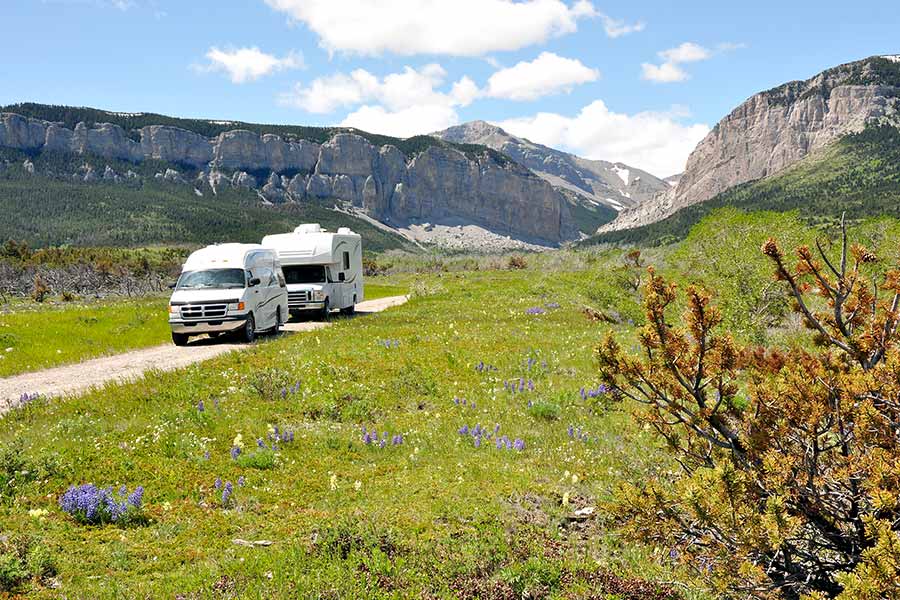
Four-Wheel Drive vs. Two-Wheel Drive
Oh, the places you will be able to go when you have a four-wheel-drive camper van. You can go in the snow, dirt, and up hills. Not much is there to hold you back. Four-wheel drive makes it a lot more fun finding off the grid camping spots. Drive off the beaten path in a van that handles like it was made for the off-road trails.
It is said that rear wheel (two-wheel) drive vehicles do handle better, which would explain why some people prefer them. This fact is most likely thanks to the lighter weight. Lighter weight often means burning less fuel, as well. Fewer trips to the gas pump means more money to go on adventures.
How Do They Handle On Dirt Roads?
Unless your camper van is a 4×4, you will probably not find any offroading very much fun. Dirt roads are often riddled with potholes that will make you cringe when you hit them. When taking a dirt road is unavoidable, do not expect to go more than 20-30 mph on some of them.
Some camper vans sit low to the ground, which makes driving on dirt roads an ultra-slow pace. If you pay attention, the vehicles that do the best offroad set raised up with big tires and a ground clearance made for potholes and things sticking up like large rocks. If you are not really careful, you might cause damage to the undercarriage of your van.
Locking It Up All Tight
Before you get in the driver’s seat with your keys in your hand, go double-check that all of your cabinets are locked, even the fridge. Imagine that you are driving down the road, and your pantry cabinet springs open, then the refrigerator; not only will it make a mess, but it is distracting while driving.
Every time you drive your camper van down the road, your equipment will act like it is like experiencing an mini earthquake. The same goes for the gear that you have strapped to the roof and rear of the van. All straps and bungees should be tight and secure before you take off. As the driver, you must be sure that your van is not a hazard to other travelers on the road.
There will be some other little things along the way that you will learn about your specific camper van. Plus, you will quickly find a vast community of van campers out there eager to share their adventures and advice with you.
Final Thoughts
The best way to get comfortable driving a camper van is just to do it! They may have their quirks. Overall, they have decent customer ratings and have grown more and more in popularity over the past decade. Camper vans are comfortable to drive, easy to handle, and cozy little places to live.


